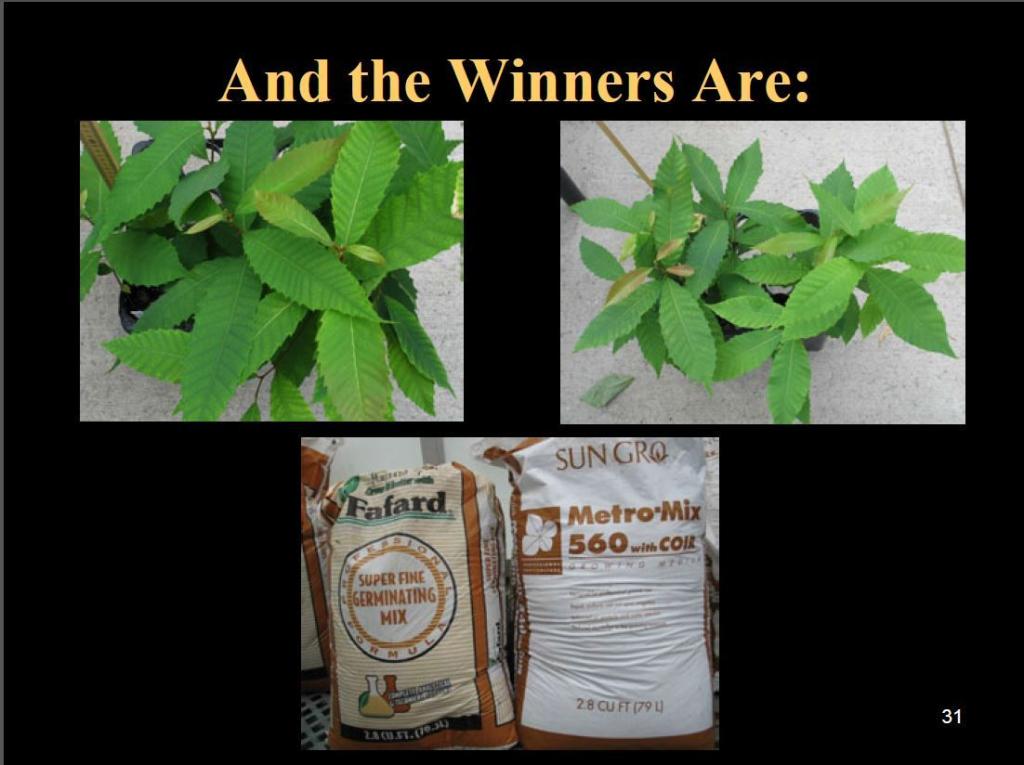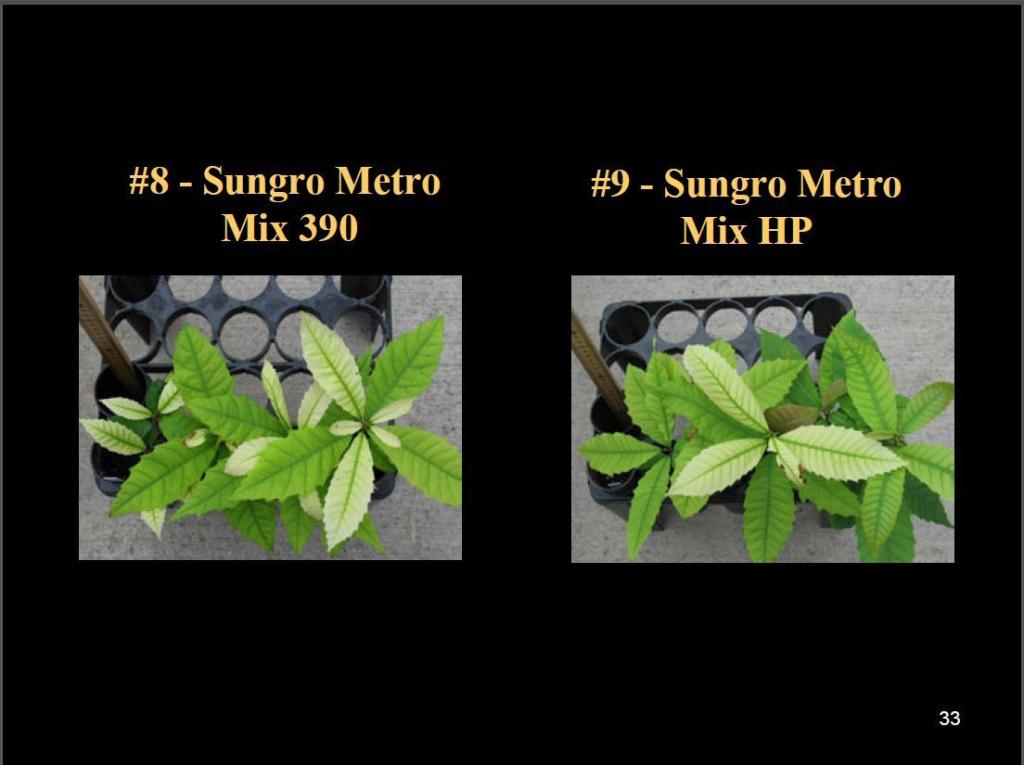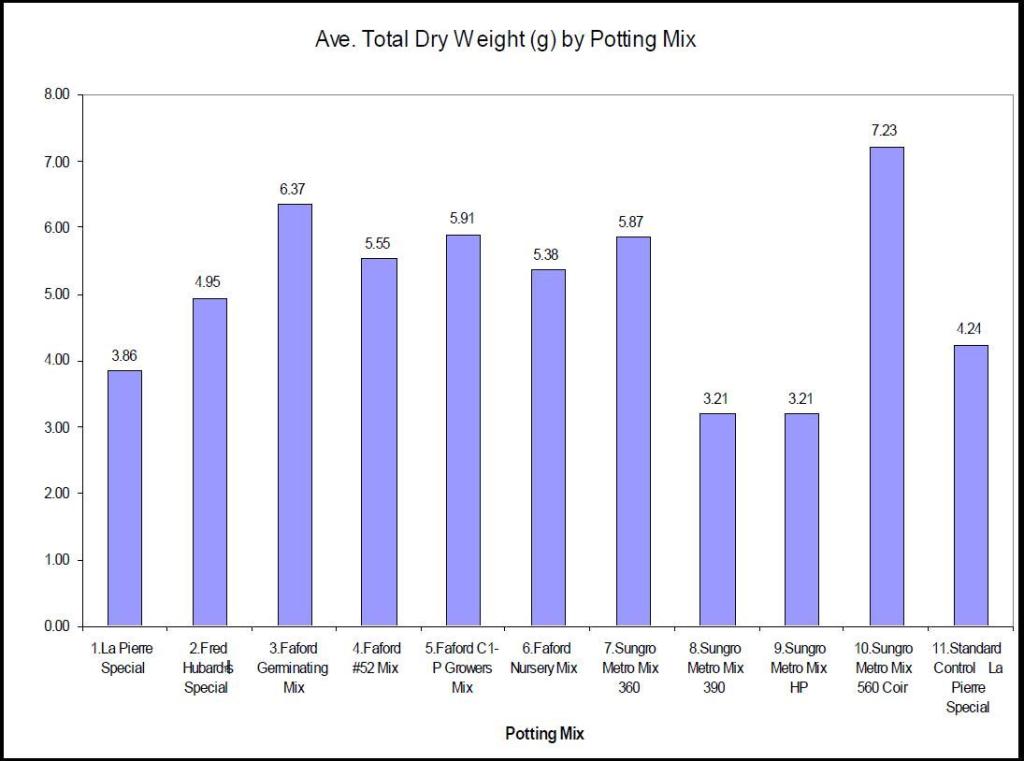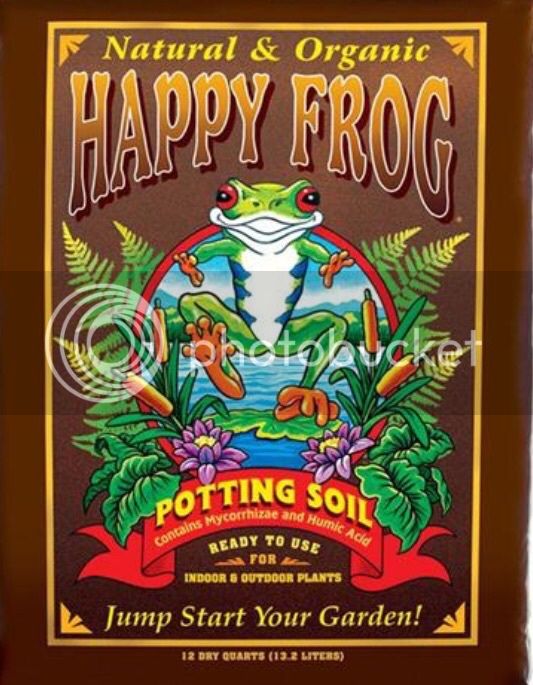yoderjac
5 year old buck +
I've seen that question asked a lot. I understand the general concepts of starting trees in rootmaker cells. You want a well drained mix that leaves lots of space in the cell for root branching to fill. But, how does that translate to all the specific mixes out there?
So far, I've used two mixes, Fafard 3B and Promix BX. I know many of you have used these as well. They seem to work pretty well but until now, I had not seen any hard data on mixes.
As I was poking around today looking at nut grafting techniques, I ran across this presentation related to American Chestnut Restoration: http://www.forestbiotech.org/wp-con...can_chestnut_restoration_research-Maynard.pdf
There is lots of good information in general in the presentation, but I found one section on mixes pretty enlightening. It is the first hard data I've found. They tested 11 different mixes with 5 seed lots and replicated it 3 times. While this testing was focused on chestnuts, I'm fairly confident that it applies to most tree seedlings we grow.
So, who were the winners and losers?


Neither of the mixes I used were in the test. Mixes will change over time, but what generalization can we make about the difference between winners and losers?

When you look at the chart, both winners were the two highest dry weights and the two losers were the two lowest dry weights.
I hope this sheds a little more light on choosing a mix.
Thanks,
Jack
So far, I've used two mixes, Fafard 3B and Promix BX. I know many of you have used these as well. They seem to work pretty well but until now, I had not seen any hard data on mixes.
As I was poking around today looking at nut grafting techniques, I ran across this presentation related to American Chestnut Restoration: http://www.forestbiotech.org/wp-con...can_chestnut_restoration_research-Maynard.pdf
There is lots of good information in general in the presentation, but I found one section on mixes pretty enlightening. It is the first hard data I've found. They tested 11 different mixes with 5 seed lots and replicated it 3 times. While this testing was focused on chestnuts, I'm fairly confident that it applies to most tree seedlings we grow.
So, who were the winners and losers?


Neither of the mixes I used were in the test. Mixes will change over time, but what generalization can we make about the difference between winners and losers?

When you look at the chart, both winners were the two highest dry weights and the two losers were the two lowest dry weights.
I hope this sheds a little more light on choosing a mix.
Thanks,
Jack
Last edited:
